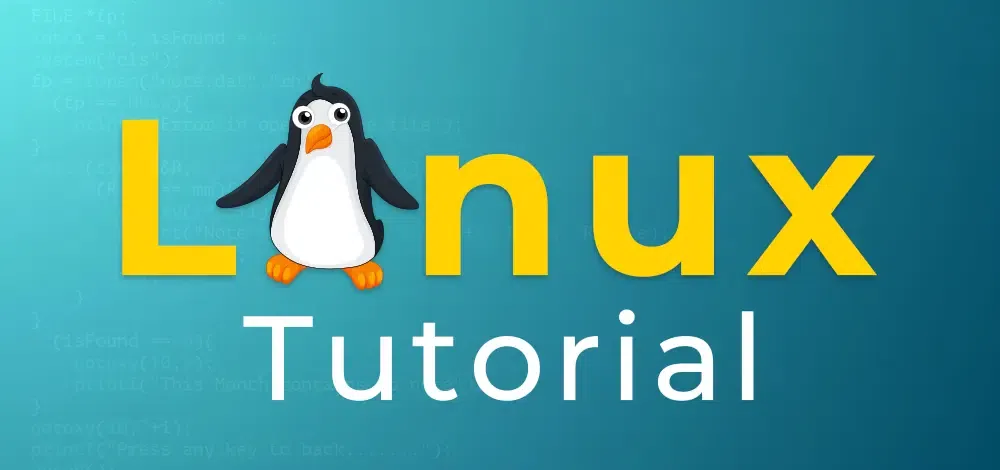Linux/Unix Tutorial
Last Updated :
22 Apr, 2024
Linux is a widely-used open-source operating system, similar to Windows, Mac, and Android. It shares similarities with Unix, another operating system known for its commercial use. Unix and Linux have comparable components, including the kernel, shell, and programs. Many commands in Unix and Linux exhibit similar behavior and syntax.

Linux Tutorial
This Linux tutorial designed for both beginners as well as experienced professionals, covering basic and advanced concepts of Linux such as Linux commands, directory and file management, man pages, file permissions, shells, and more.
Additionally, we also provide a collections of Linux interview questions to enhance your understanding of this operating system.
Linux Tutorial Page Index
Introduction to Linux
Getting Started with Linux
Basic Linux Commands:
Here you can get the basic commands – Basic Commands in Linux
Linux File System
File Management in Linux
Here you can get the basic of File – File Management in Linux
Permissions in Linux
Package Management
User and Group Management
Linux Networking
Linux Firewall
Shell Scripting
System Administration
- What is Linux System Administration?
- Overview of system administration
- Role and responsibilities of a Linux system administrator
- Importance of Linux system administration
- Beginner’s Guide to Linux System Administration
- How to monitor system usage, outages and troubleshoot Linux Servers
- System monitoring tools (e.g., top, htop, vmstat)
- Log files and log management
- Monitoring system resources (CPU, memory, disk usage)
- Troubleshooting common issues (network connectivity, service failures)
- Linux – Systemd and its Components
- Introduction to systemd and its role in Linux
- Key components of systemd (systemd units, targets, services)
- systemd commands and utilities
- Managing and configuring systemd units
- Boot Process with system in Linux
- Role of systemd in the boot process
- systemd targets and their significance
- Boot sequence and initialization steps
- Troubleshooting boot-related issues
- How to control systemd services on Remote Linux Server
- Establishing remote access to Linux servers
- Understanding systemd service units
- Enabling, disabling, and restarting services remotely
- Checking the status of services
- Managing dependencies and ordering of services
- Start/Stop/Restart Services using Systemctl in Linux
- Introduction to systemctl command
- Starting, stopping, and restarting services
- Reloading configuration of services
- Enabling and disabling services at boot
- Managing service units and configurations
Security and hardening in Linux
Advance Linux Concepts
Linux Cloud
- Linux in Cloud
- What is cloud computing?
- Definition and key concepts of cloud computing
- Benefits and challenges of cloud computing
- Types of cloud services (IaaS, PaaS, SaaS)
- Cloud deployment models (public, private, hybrid, multi-cloud)
Some working with different package managers (dpkg, yum, dnf, apt-get):
Linux Interview Questions
FAQs on Linux Tutorial
Q1: How to create a file in Linux?
To create a file in Linux, you can use the `touch` command followed by the desired file name. For example: touch filename.txt
Q2: Is Linux a programming skill?
No, Linux is not a programming skill. Linux is an operating system that provides a powerful command-line interface and a vast array of development tools and libraries, making it a preferred platform for software development.
Q3: What is a Linux command?
A Linux command is a text-based instruction entered into the terminal or command-line interface to perform specific operations.
Q4: How much time does it take to learn Linux?
Mastering Linux administration and advanced topics may require months or even years of continuous learning and hands-on experience.
Q5: What is Linux used for?
Linux is used in a wide range of applications and environments but it is commonly used as a server operating system due to its stability, security, and scalability.
Q6: What are the benefits of Linux?
There are several benefits of using Linux:
- Open Source: Linux is distributed under free open-source licenses, allowing users to access and modify the source code.
- Stability and Security: Linux is known for its stability and security, making it less prone to crashes, malware, and other vulnerabilities compared to other operating systems.
- Customization: Linux offers a high degree of customization, allowing users to configure and tailor their systems to specific needs and preferences.
- Compatibility: Linux supports a wide range of hardware architectures and offers compatibility with various file systems, software, and protocols.
- Performance: Linux is known for its efficiency and performance, often outperforming other operating systems, especially in resource-constrained environments.
Share your thoughts in the comments
Please Login to comment...